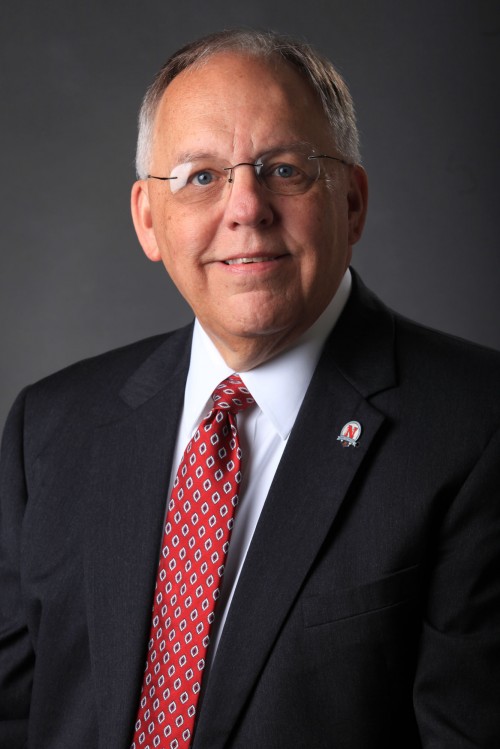
New St. Mary tourism sight: sinking visitor’s center
June 19, 2012
Storm drill measures region’s recovery readiness
June 19, 2012Nicholls State University’s state funding will be reduced by $4.4 million in the 2012-13 fiscal year, a 7.6 percent reduction from 2011-12, the University of Louisiana System announced last week.
The reduction is less than the $7.7 million administrators feared would be cut last month, but it still could result in larger class sizes, less class sections and further reduction of student services, such as tutoring, academic advising and financial-aid assistance.
“We’re working diligently to try to get a handle on what can be done,” said Larry Howell, the university’s executive vice president. “We will meet our obligation and, at the same time, give the region the best product we can put out.”
State support to Nicholls will have declined from $35.8 million in 2008-09 to $17.9 million in 2012-13, a 50 percent reduction. In addition to $17.9 million in losses, state mandated costs, such as payments into the state’s retirement system, have risen by at least $4 million over the same period.
The university was also told in January to cut its budget by $1.14 million due to state-funding woes, to which Nicholls responded by instilling a hiring freeze, decreasing the number of scholarships it offers and cutting travel allowances.
Howell said the university, in response to the latest diminution, will not cut any academic programs, which it last did in 2009. At this point, eliminating programs would likely diminish enrollment and tuition, which the university has gradually been forced to rely on more heavily.
Larger class sizes also lessens individual teacher-student access, and less class sections will likely prevent some students from enrolling in particular classes at certain times, Howell said.
“(The impact is) everywhere,” Howell said. “There’s not going to be an area that’s not affected some kind of way.”
The issue may be compounded further, as Howell said administrators are predicting another decline in Fall 2012 enrollment. If 300 fewer full-time students enroll this year than last year, the vice president said, the university will miss $1.6 million in tuition. This is despite an anticipated state-permitted tuition increase.
Total enrollment in the fall semester declined from 7,093 in 2010 to 6,774 in 2011, according to Nicholls’ assessment and institutional research. In the spring, enrollment declined from 6,385 in 2011 to 6,088 in 2012.
Enrollment projections are fluid, Howell stressed. He attributed the decline to the resilient local economy, which boasts an unemployment rate envied by most of the nation, and steadily increasing graduation rates, which clears the “pipeline” sooner.
“(The financial situation) is going to affect how we can meet the students’ needs,” Howell said. “We will meet them. We absolutely will. All of our programs are healthy, but we will maybe not meet them at the same level of service they’re used to.”
The extent of the cut is diminished from the originally feared $7.7 million because state lawmakers helped offset state budget woes with the infusion of non-recurring revenue.
Critics of using one-time funds say the strategy ensures the issues will return next year, and proponents of the move point to the fact that cuts to higher education and health care are lessened in the short term.
In total, the state’s higher-education funding was reduced by $66 million.
Higher-education institutions throughout the state have suffered annual and mid-year cuts to their funding for the last four years. Most higher education funding is undedicated revenue, so it is one of the first places lawmakers look when cutting expenditures.
One way the universities across the state are dealing with the cuts is tuition hikes as authorized by the state Legislature through the Grad Act of 2010. The law gives universities leeway to raise tuition so long as they meet accountability metrics, namely in terms of student graduation rates.
Nicholls boosted its revenue by $9 million since 2008 due to tuition increases – which will continue under authority of the Grad Act –and the university’s net loss was roughly $7 million heading into 2011-12.
In 2011-12, the university generated $20 million in tuition, which was supplemented by about $22.3 million in state support.
Full-time, undergraduate students residing in Louisiana paid $2,368 per semester in tuition 2011-12. If the university receives authority to implement a 10 percent hike, that number would rise to $2,605 per semester in 2012-13.
Nicholls has eliminated 101 positions, seven academic programs and four concentrations since 2008. The university has also frozen salaries and restricted travel allotments and supply purchases.
In a printed statement Randy Moffett, the UL System president, urged the Board of Regents to suspend its “complex funding formula” and restructure the way diminutions are allocated among the state’s universities.
Moffett said the formula fails to recognize differences in role, scope and mission, fails to recognize that smaller institutions are more at risk and fails to recognize tuition differences between peer institutions.
While the Grad acts ensure universities meet educational standards in order to increase self-generated revenue and gain more spending freedom, the Regents’ funding formula is not incentive based, Moffett said.
“Given the financial crisis facing higher education in Louisiana, a temporary suspension of the formula would allow limited resources to be allocated in a fairer manner,” he said. “In this period where we find state funding comprising 39 percent of total funding and students are paying 61 percent, it seems appropriate and timely that a healthy, collaborative dialogue about a fair funding model needs to occur.”
Nicholls’ 7.6 percent cut is the second-highest cut among the nine universities in the UL System, which took a 6.8 percent cut overall. University of Louisiana at Monroe’s state support was cut $6.8 million, or 8.4 percent.
LARRY HOWELL











